| Listing 1 - 10 of 12 | << page >> |
Sort by
|
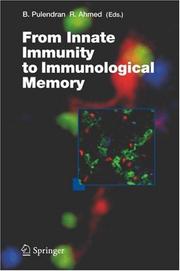
ISBN: 1280635126 9786610635122 3540326367 3540326359 Year: 2006 Publisher: Berlin ; [London] : Springer,
Abstract | Keywords | Export | Availability | Bookmark
 Loading...
Loading...Choose an application
- Reference Manager
- EndNote
- RefWorks (Direct export to RefWorks)
The ability to remember an antigenic encounter for several decades, even for a life time, is one of the fundamental properties of the immune system. This phenomenon known as "immunological memory", is the foundation upon which the concept if vaccination rests. Therefore, understanding the mechanisms by which immunological memory is regulated is of paramount importance. Recent advances in immunology, particularly in the field of innate immunity, suggest that the innate immune system plays fundamental roles in influencing immunological memory. Indeed, emerging evidence suggests that events that occur early, within hours if not minutes of pathogen or vaccine entry profoundly shape the quantity, quality and duration of immunological memory. The present volume assembles a collection of essays from leading experts that span the entire spectrum research from understanding the molecular mechanisms of innate immune recognition, to dendritic cell function, to the generation and maintenance of antigen-specific B and T-cell responses.
Immunologic memory. --- Natural immunity. --- Immune response. --- Immunology --- Disease resistance --- Host resistance --- Innate immunity --- Innate resistance --- Native immunity --- Natural resistance --- Nonspecific immunity --- Resistance to disease --- Immunity --- Immune memory --- Immunological memory --- Memory, Immune --- Memory, Immunologic --- Immunology. --- Immunobiology --- Life sciences --- Serology
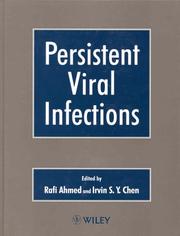
ISBN: 0471980838 Year: 1999 Publisher: Chichester ; New York : John Wiley & Sons,
Abstract | Keywords | Export | Availability | Bookmark
 Loading...
Loading...Choose an application
- Reference Manager
- EndNote
- RefWorks (Direct export to RefWorks)
Slow Virus Diseases. --- Virus diseases. --- Chronic diseases. --- Maladies à virus --- Maladies chroniques --- SLOW VIRUS DISEASES --- SLOW VIRUS DISEASES. --- Slow virus diseases. --- Maladies à virus
Book
ISBN: 364219544X 3642195458 Year: 2011 Publisher: Berlin ; Heidelberg : Springer-Verlag,
Abstract | Keywords | Export | Availability | Bookmark
 Loading...
Loading...Choose an application
- Reference Manager
- EndNote
- RefWorks (Direct export to RefWorks)
Adaptive immune responses serve as a key defense mechanism for the control of infections in vertebrates. Immune responses must be of sufficient strength to contain invading pathogens, antigen specific responses require regulatory mechanisms to ensure termination or downmodulation to avoid excessive damage to the host tissue. For both branches of the adaptive immune system, regulatory molecules i.e. coreceptors and ligands have been identified that control the signaling cascades initiated by engagement of the T cell and B cell antigen receptors. This book describes biological functions as well as molecular mechanisms of these molecules. Fc Receptor-Like molecules (FCRL) that have garnered increasing interest due to their differential patterns of lymphocyte expression and potential involvement in the pathogenesis of autoimmune disorders, immunodeficiency and lymphoid malignancies in humans. Programmed cell death-1 (PD-1) delivers negative signals upon interaction with its two ligands, PD-L1 or PD-L2. The biological significance of PD-1 and its ligand suggest the therapeutic potential of manipulation of PD-1 pathway against various human diseases. TIM-3 acts as a negative regulator of Th1/Tc1 cell function by triggering cell death upon interaction with its ligand, galectin-9. This negative regulatory function of TIM-3 has now been expanded to include its involvement in establishing and/or maintaining a state of T cell dysfunction or ‘exhaustion’ observed in chronic viral diseases. The Ly49 receptors, which are expressed in a stochastic manner on subsets of murine Natural Killer (NK) cells, T cells, and other cells, are encoded by the Klra gene family and include receptors with either inhibitory or activating function. Most of the inhibitory Ly49 receptors recognize polymorphic epitopes on major histocompatibility complex (MHC) class I proteins as ligands. Fc-receptors for IgG (FcRs) are widely expressed on innate immune effector cells in mediating the protective function of IgG. This book discusses how the interaction of these different ligands to classical and novel Fc-receptors influences the immune response and which strategies microorganisms have developed to prevent them. The host derived cytokine IL-10 is a key player in the establishment and perpetuation of viral persistence. This book covers the role of IL-10 in viral persistence and explores the exciting prospect of therapeutically blocking IL-10 to increase antiviral immunity and vaccine efficacy. TGF-ß inhibits the proliferation of T cells as well as cytokine production via Foxp3-dependent and independent mechanisms. Recent studies suggest that Smad2 as well as Smad3 play essential roles in Foxp3 induction and cytokine suppression, whereas Th17 differentiation is promoted via the Smad-independent pathway. Mutual suppression of signaling between TGF-ß and inflammatory cytokines has been shown to be necessary for the balance of immunity and tolerance.
Immunology. --- Microbiology. --- Receptor-ligand complexes. --- Immune response --- Laboratory Chemicals --- Membrane Proteins --- Proteins --- Specialty Uses of Chemicals --- Chemical Actions and Uses --- Amino Acids, Peptides, and Proteins --- Chemicals and Drugs --- Receptors, Cell Surface --- Ligands --- Biology --- Health & Biological Sciences --- Microbiology & Immunology --- Microbial biology --- Ligand-receptor complexes --- Receptor complexes (Biochemistry) --- Medicine. --- Biomedicine. --- Immunobiology --- Life sciences --- Serology --- Clinical sciences --- Medical profession --- Human biology --- Medical sciences --- Pathology --- Physicians --- Microorganisms --- Cell receptors --- Ligand binding (Biochemistry)
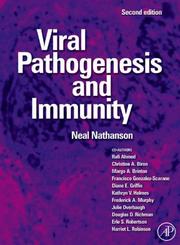
ISBN: 9780080471051 0080471056 0123694647 9780123694645 1280962828 9786610962822 Year: 2007 Publisher: Amsterdam Boston Elsevier Academic Press
Abstract | Keywords | Export | Availability | Bookmark
 Loading...
Loading...Choose an application
- Reference Manager
- EndNote
- RefWorks (Direct export to RefWorks)
Etiology. --- Host-virus relationships. --- Immunological aspects. --- Immunology. --- Pathogenesis. --- pathogenicity. --- Virus diseases - Immunological aspects. --- Virus diseases - Pathogenesis. --- Virus diseases. --- Viruses. --- Virus diseases --- Viral diseases --- Viral infections --- Virus infections --- Communicable diseases --- Medical virology --- Pathogenic viruses --- Relationships, Host-virus --- Virus-host relationships --- Host-parasite relationships --- VIRUS DISEASES --- PHYSIOPATHOLOGY --- IMMUNOLOGY
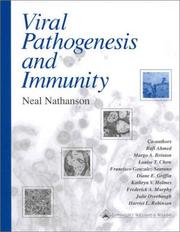
ISBN: 0781711037 Year: 2002 Publisher: Philadelphia (Pa.) : Lippincott Williams and Wilkins,
Abstract | Keywords | Export | Availability | Bookmark
 Loading...
Loading...Choose an application
- Reference Manager
- EndNote
- RefWorks (Direct export to RefWorks)
Host-virus relationships. --- Virus Diseases --- Virus Diseases --- Virus diseases --- Virus diseases --- Viruses --- etiology. --- immunology. --- Immunological aspects. --- Pathogenesis. --- pathogenicity.
Digital
ISBN: 9783540326366 Year: 2006 Publisher: Berlin, Heidelberg Springer-Verlag Berlin Heidelberg
Abstract | Keywords | Export | Availability | Bookmark
 Loading...
Loading...Choose an application
- Reference Manager
- EndNote
- RefWorks (Direct export to RefWorks)
Digital
ISBN: 9783642195457 Year: 2011 Publisher: Berlin, Heidelberg Springer Berlin Heidelberg
Abstract | Keywords | Export | Availability | Bookmark
 Loading...
Loading...Choose an application
- Reference Manager
- EndNote
- RefWorks (Direct export to RefWorks)
Book
ISBN: 9783540326366 Year: 2006 Publisher: Berlin Heidelberg Springer Berlin Heidelberg
Abstract | Keywords | Export | Availability | Bookmark
 Loading...
Loading...Choose an application
- Reference Manager
- EndNote
- RefWorks (Direct export to RefWorks)
(will follow)
Book
ISBN: 9783642195457 Year: 2011 Publisher: Berlin Heidelberg Springer Berlin Heidelberg Imprint Springer
Abstract | Keywords | Export | Availability | Bookmark
 Loading...
Loading...Choose an application
- Reference Manager
- EndNote
- RefWorks (Direct export to RefWorks)
Adaptive immune responses serve as a key defense mechanism for the control of infections in vertebrates. Immune responses must be of sufficient strength to contain invading pathogens, antigen specific responses require regulatory mechanisms to ensure termination or downmodulation to avoid excessive damage to the host tissue. For both branches of the adaptive immune system, regulatory molecules i.e. coreceptors and ligands have been identified that control the signaling cascades initiated by engagement of the T cell and B cell antigen receptors. This book describes biological functions as well as molecular mechanisms of these molecules. Fc Receptor-Like molecules (FCRL) that have garnered increasing interest due to their differential patterns of lymphocyte expression and potential involvement in the pathogenesis of autoimmune disorders, immunodeficiency and lymphoid malignancies in humans. Programmed cell death-1 (PD-1) delivers negative signals upon interaction with its two ligands, PD-L1 or PD-L2. The biological significance of PD-1 and its ligand suggest the therapeutic potential of manipulation of PD-1 pathway against various human diseases. TIM-3 acts as a negative regulator of Th1/Tc1 cell function by triggering cell death upon interaction with its ligand, galectin-9. This negative regulatory function of TIM-3 has now been expanded to include its involvement in establishing and/or maintaining a state of T cell dysfunction or exhaustion' observed in chronic viral diseases. The Ly49 receptors, which are expressed in a stochastic manner on subsets of murine Natural Killer (NK) cells, T cells, and other cells, are encoded by the Klra gene family and include receptors with either inhibitory or activating function. Most of the inhibitory Ly49 receptors recognize polymorphic epitopes on major histocompatibility complex (MHC) class I proteins as ligands. Fc-receptors for IgG (Fcï§Rs) are widely expressed on innate immune effector cells in mediating the protective function of IgG. This book discusses how the interaction of these different ligands to classical and novel Fcï§-receptors influences the immune response and which strategies microorganisms have developed to prevent them. The host derived cytokine IL-10 is a key player in the establishment and perpetuation of viral persistence. This book covers the role of IL-10 in viral persistence and explores the exciting prospect of therapeutically blocking IL-10 to increase antiviral immunity and vaccine efficacy. TGF-ß inhibits the proliferation of T cells as well as cytokine production via Foxp3-dependent and independent mechanisms. Recent studies suggest that Smad2 as well as Smad3 play essential roles in Foxp3 induction and cytokine suppression, whereas Th17 differentiation is promoted via the Smad-independent pathway. Mutual suppression of signaling between TGF-ß and inflammatory cytokines has been shown to be necessary for the balance of immunity and tolerance.
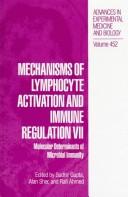
ISBN: 0306460335 Year: 1998 Publisher: New York ; London Plenum press
Abstract | Keywords | Export | Availability | Bookmark
 Loading...
Loading...Choose an application
- Reference Manager
- EndNote
- RefWorks (Direct export to RefWorks)
| Listing 1 - 10 of 12 | << page >> |
Sort by
|

 Search
Search Feedback
Feedback About UniCat
About UniCat  Help
Help News
News